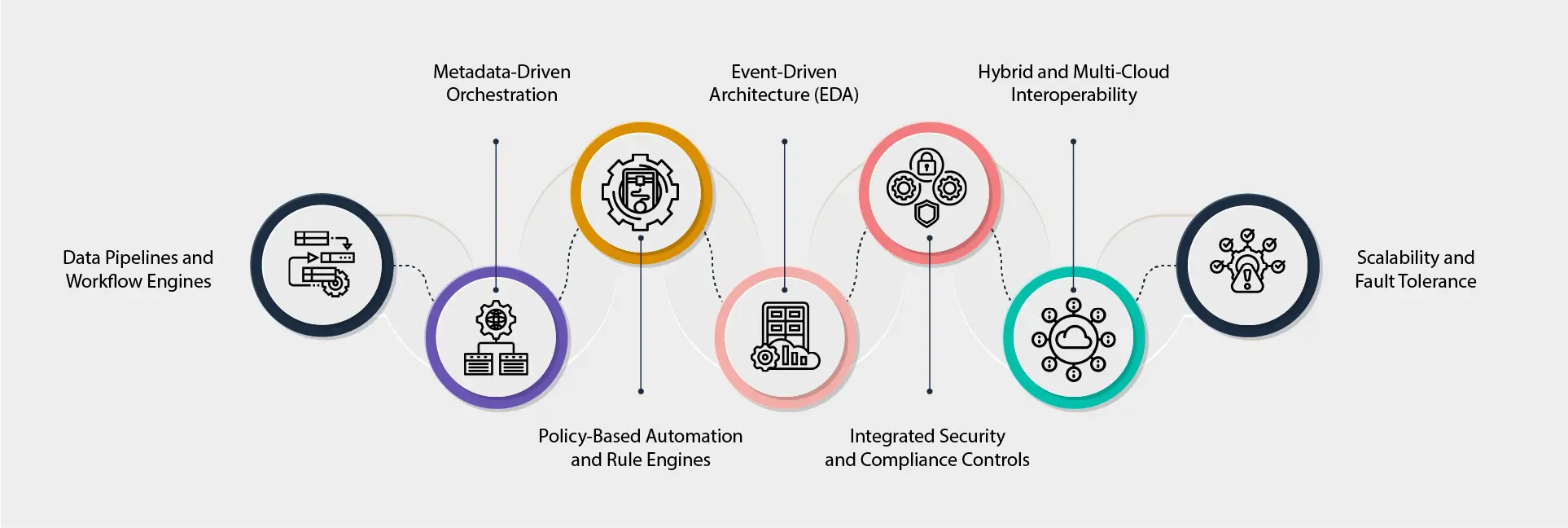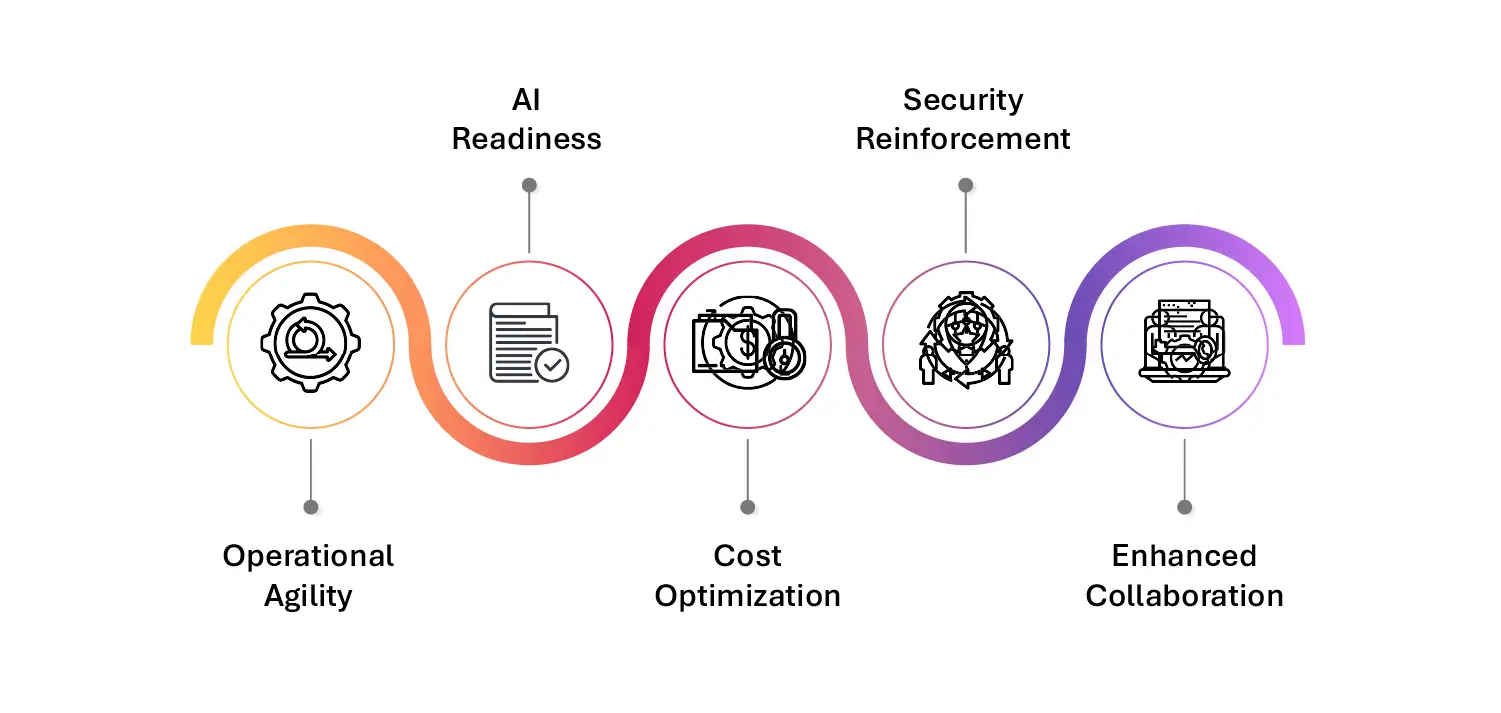What is Data Orchestration?
Data orchestration refers to the automated process of organizing, integrating, and managing data across disparate sources, formats, and systems to ensure it flows smoothly through an enterprise’s data pipeline. Unlike traditional data integration, which often relies on manual, static workflows, data orchestration offers a dynamic, scalable, and policy-driven approach to move the right data to the right place at the right time—securely and intelligently.
At its core, data orchestration acts as the “conductor” in the enterprise data ecosystem, coordinating various data sources, processing tools, and destinations to work together seamlessly.
Why Does Data Orchestration Matter?
In today’s data-first enterprises, data is scattered across hybrid cloud, on-prem, object stores, file shares, and SaaS platforms. Without orchestration, teams spend more time managing chaos than extracting insights. According to Gartner, by 2025, over 80% of data strategies will fail due to a lack of automation and scalability, both key tenets of data orchestration.
Orchestration ensures that structured and unstructured data moves securely, remains compliant, and becomes available in formats that support analytics, AI, and operational efficiency.
Key Components of Data Orchestration

1. Data Pipelines and Workflow Engines
At the heart of data orchestration lies the data pipeline—a sequence of automated tasks that ingest, validate, transform, and route data across environments. These pipelines are built and managed using orchestration engines that support conditional logic, parallel execution, retries, failure handling, and scheduling. Advanced engines support DAGs (Directed Acyclic Graphs) to manage task dependencies and optimize performance across large-scale workflows.
2. Metadata-Driven Orchestration
Orchestration tools leverage active metadata—information about data type, source, ownership, sensitivity, and quality—to make intelligent decisions about data movement. By dynamically querying metadata catalogs, orchestration systems can automatically classify data, determine policy rules, and identify optimal storage tiers or compute environments for execution.
3. Policy-Based Automation and Rule Engines
Orchestration platforms are typically governed by policy engines that allow organizations to define data handling rules—e.g., “Move personally identifiable information (PII) only to encrypted repositories,” or “Retain backup copies of financial data for seven years.” These policies are executed at runtime, ensuring enforcement of business rules and compliance mandates.
4. Event-Driven Architecture (EDA)
Modern data orchestration leverages event-driven triggers to initiate data workflows in response to real-time events—such as a new file arrival, data quality anomaly, or system alert. This reduces latency and enables near real-time responsiveness, particularly useful in streaming analytics, cybersecurity, or supply chain applications.
5. Integrated Security and Compliance Controls
Security is embedded throughout the orchestration lifecycle. This includes encryption (at-rest and in-transit), tokenization, access control via RBAC (Role-Based Access Control), and audit trails. Some orchestration systems support dynamic data masking, lineage tracking, and compliance logging to satisfy regulatory frameworks like GDPR, HIPAA, CCPA, and the India DPDP Act.
6. Hybrid and Multi-Cloud Interoperability
Data orchestration platforms are designed to operate across complex environments—on-premises, private cloud, public cloud (AWS, Azure, GCP), and even edge locations. They often come with pre-built connectors and APIs that support file, object, and structured data formats, ensuring seamless movement across file systems, databases, object stores, SaaS platforms, and message queues.
7. Scalability and Fault Tolerance
Built on microservices and containerized architectures, modern orchestration systems scale elastically based on workload demands. They feature self-healing, retry logic, and checkpointing to ensure reliable operation even in the event of failures, network issues, or resource contention.
Benefits of Data Orchestration

Data orchestration simplifies complexity across modern data environments. Key benefits include:
- Operational Agility: Automates time-consuming manual tasks, reducing human error and speeding up execution.
- AI Readiness: Feeds clean, contextualized, and governed data into AI/ML workflows, improving model accuracy.
- Cost Optimization: Identifies cold or redundant data and enables smart tiering to lower-cost storage.
- Security Reinforcement: Ensures sensitive data is discovered, classified, and moved in compliance with policies like GDPR, HIPAA, and DPDP.
- Enhanced Collaboration: Makes trusted, real-time data accessible across departments, fostering data democratization.
A global healthcare provider orchestrated over 2 PB of unstructured patient data from legacy file shares into a cloud-based analytics platform. Using policy-based orchestration, they ensured HIPAA compliance, enabled real-time data access for research teams, and accelerated clinical trial timelines by 20%.
Future Trends in Data Orchestration
As enterprises embrace AI, real-time analytics, and edge computing, data orchestration is evolving to support:
- Autonomous Data Movement: AI-driven orchestration that anticipates and adjusts to business needs.
- Edge-to-Core Synchronization: Real-time orchestration across IoT and remote devices.
- Federated Governance: Embedding orchestration within decentralized data ownership models.
With the rise of self-service data management, orchestration will no longer be a backend IT function—it will become an enterprise-wide enabler of innovation, resilience, and compliance.
Data orchestration is not just about moving files—it’s about making data usable, trustworthy, and impactful. In an age where data volumes are exploding and regulatory pressures are intensifying, a robust orchestration layer is critical to any enterprise’s data transformation journey.
Getting Started with Data Dynamics:
- Learn about Unstructured Data Management
- Schedule a demo with our team
- Read the latest blog: AI Is Only as Secure as the Data You Feed It. Is Yours Truly Ready?






